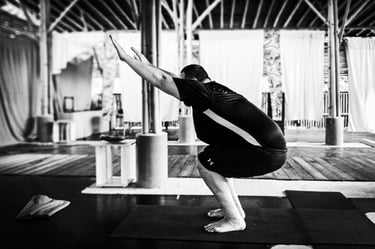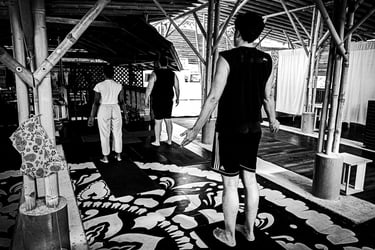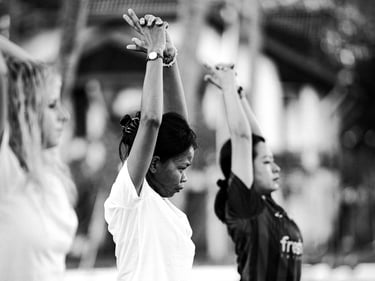A Gentle Standing Sequence


The vinyasa can involve numerous transitions, which may feel like a lot of movement for some practitioners. Coordinating these movements with breath can be demanding, potentially leaving some of us short of breath. To help practitioners maintain a steady breath, finishing poses are often used as resting points to reconnect before beginning the next sequence.
Key muscle groups worked in this sequence are :
Hamstrings:
Multiple forward folds and Downward Dog engage and stretch the hamstrings, preparing them for deeper movements in dynamic sequences like Surya Namaskara (Sun Salutations).
Core Muscles:
Poses such as Tadasana, Squat and Table Top engage the core muscles, including the rectus abdominis, transverse abdominis, and obliques. A strong core is essential for stability during the transitions and postures in Surya Namaskara (and other sequences).


Introduction
Our Gentle Standing Sequence comprises an arrangement dynamic and static poses designed to create stability and ease while gently activating the major muscle groups. This sequence is ideal for grounding the body and mind, making it a great start to any practice.
By focusing on alignment and controlled movements, the sequence helps enhance balance and strength without putting undue stress on the joints.
Shoulders:
The shoulders and upper back muscles are activated in Downward Dog, Table Top and Squat (or Chair Pose), preparing these areas for the weight-bearing and extended arm positions required in Surya Namaskara.
Energetic Focus:
This sequence is designed to prepare the body by activating the sacral and lumbar plexuses - key nerve centres that support stability, movement, and core energy.
These plexuses align with the body's energy centres, particularly the Root Chakra (Muladhara) and Solar Plexus Chakra (Manipura), which are fundamental for grounding and personal power.
The gentle warming effect of the sequence supports the activation and flow of energy through these areas, building Agni (inner fire) and priming the body for further activity or deeper practice.


More Insights
